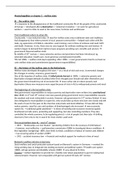Summary
welfare state summary chapter 3 social studies bricks tvwo
- Course
- Level
summary of chapter 3 of social studies bricks textbook. in the textbook, all the concepts are written in a difficult way, in this summary I explained everything in an easy way to understand. With the help of my summaries, I ended my school year with a 9.3 in social studies.
[Show more]



